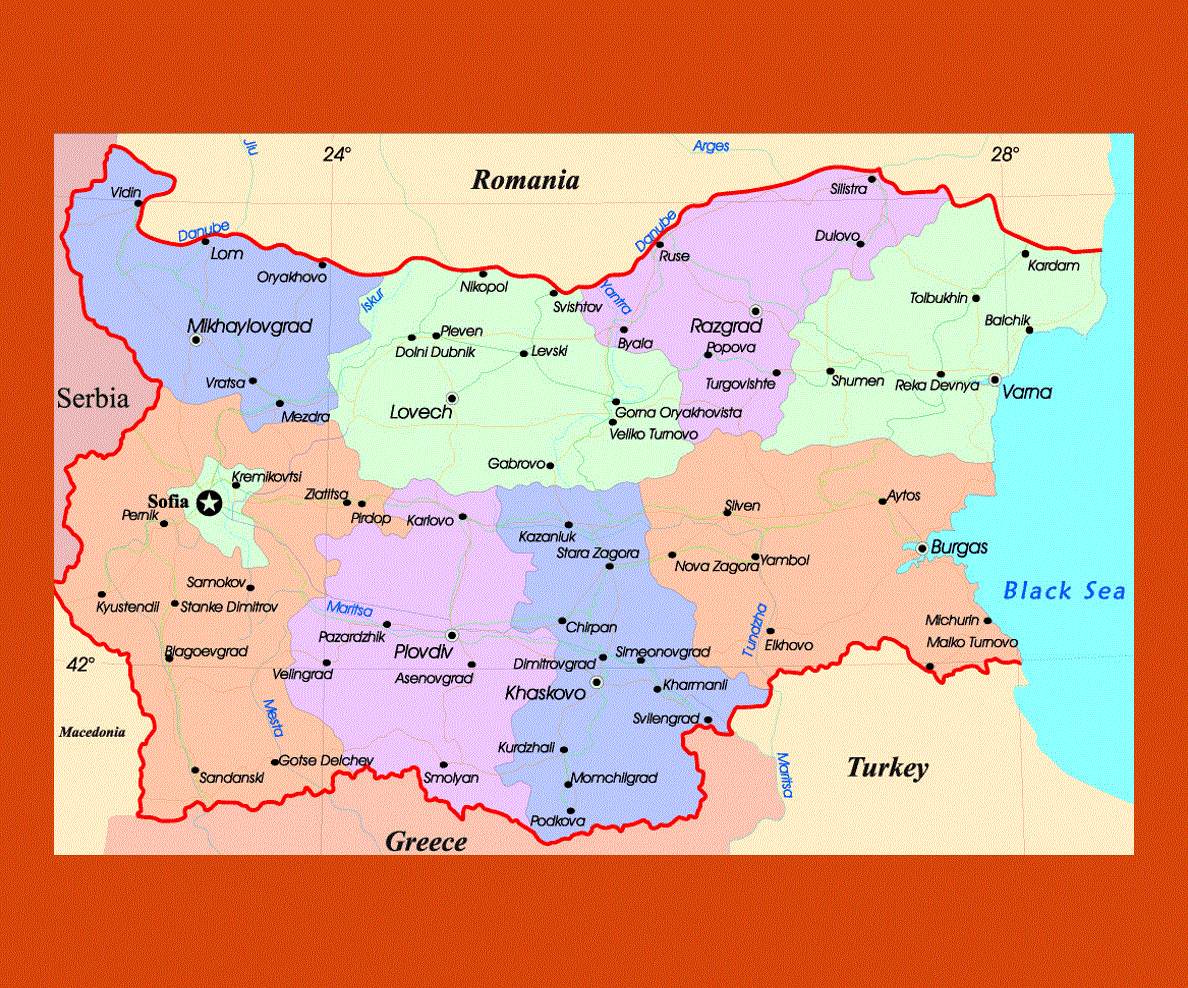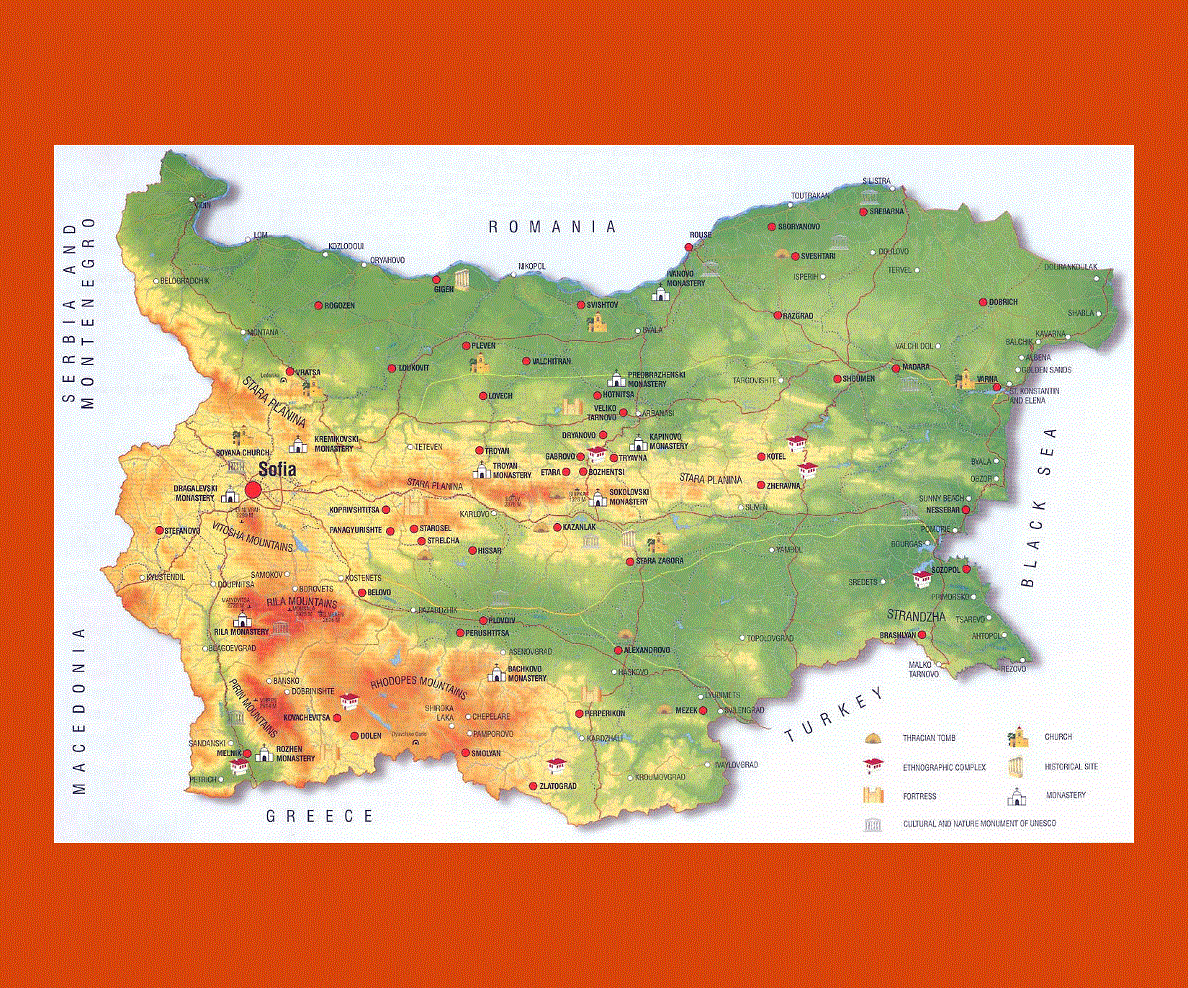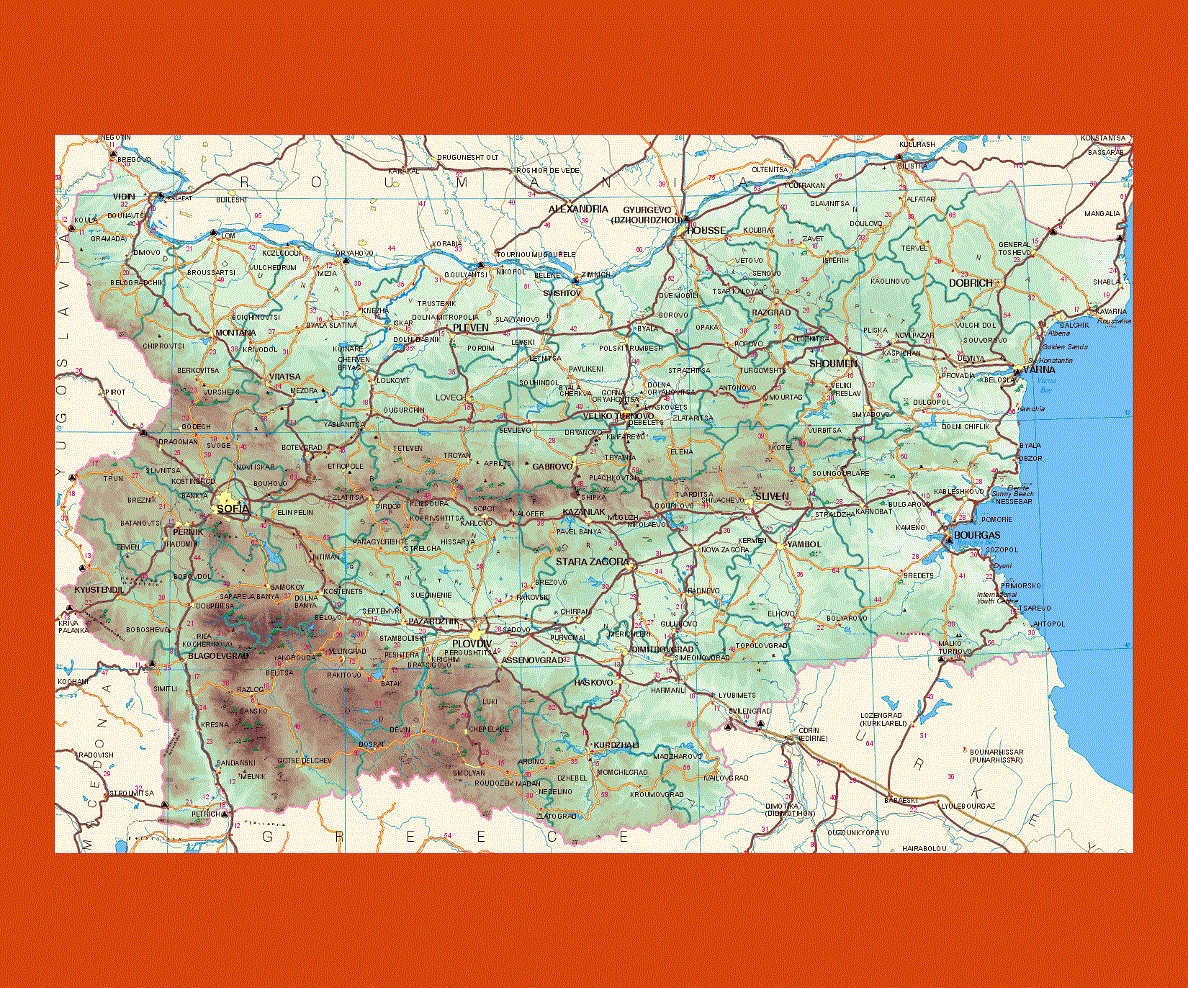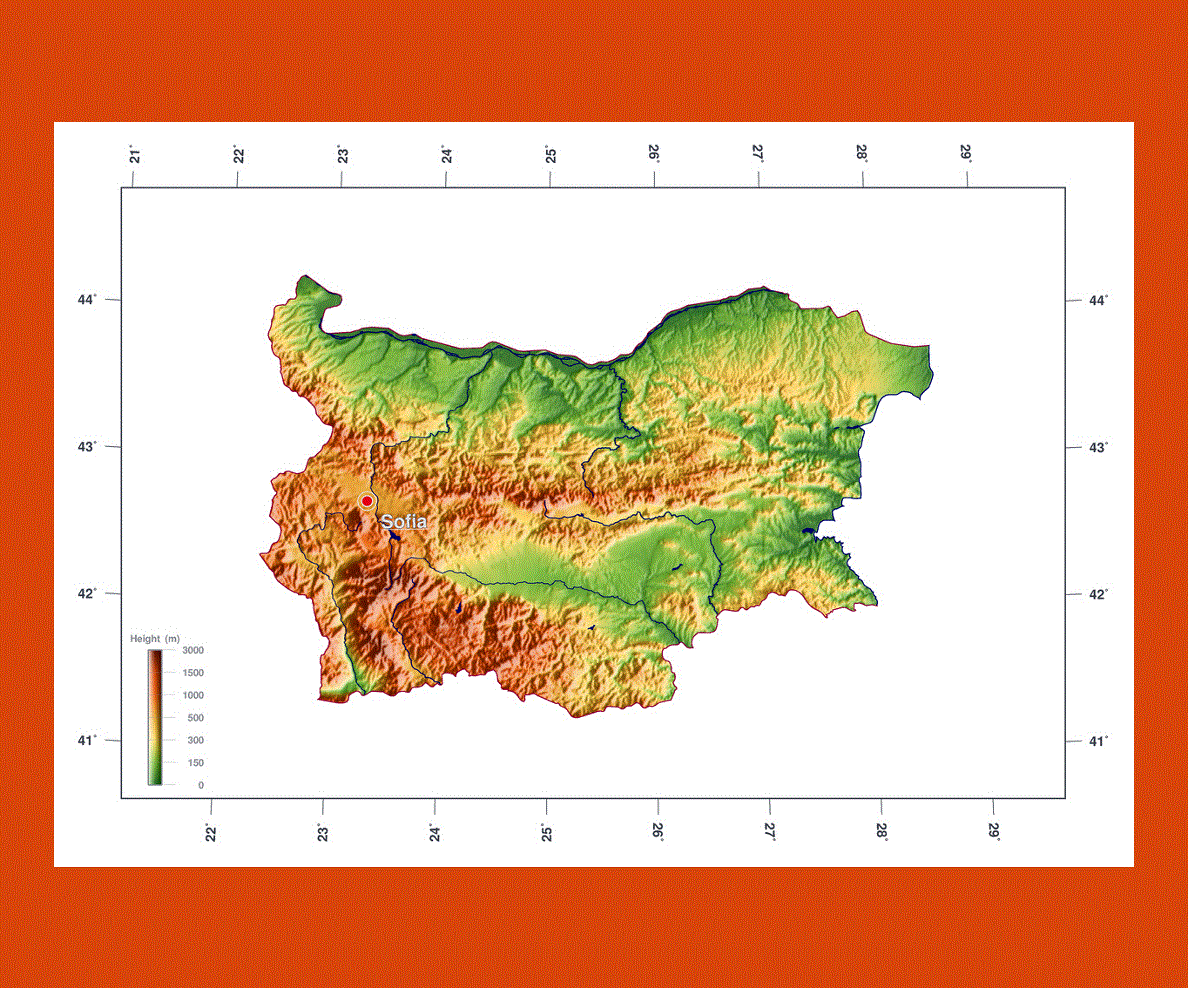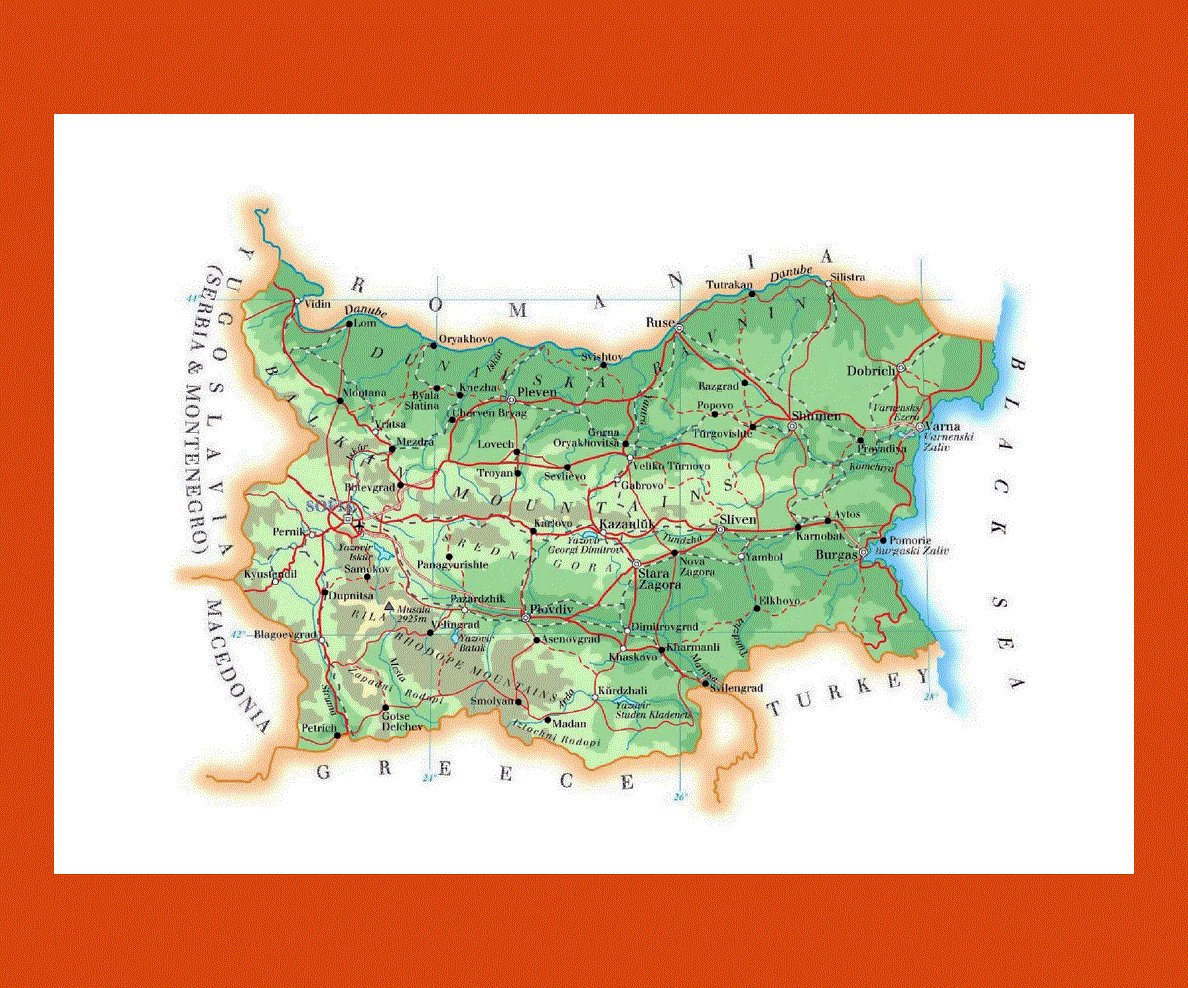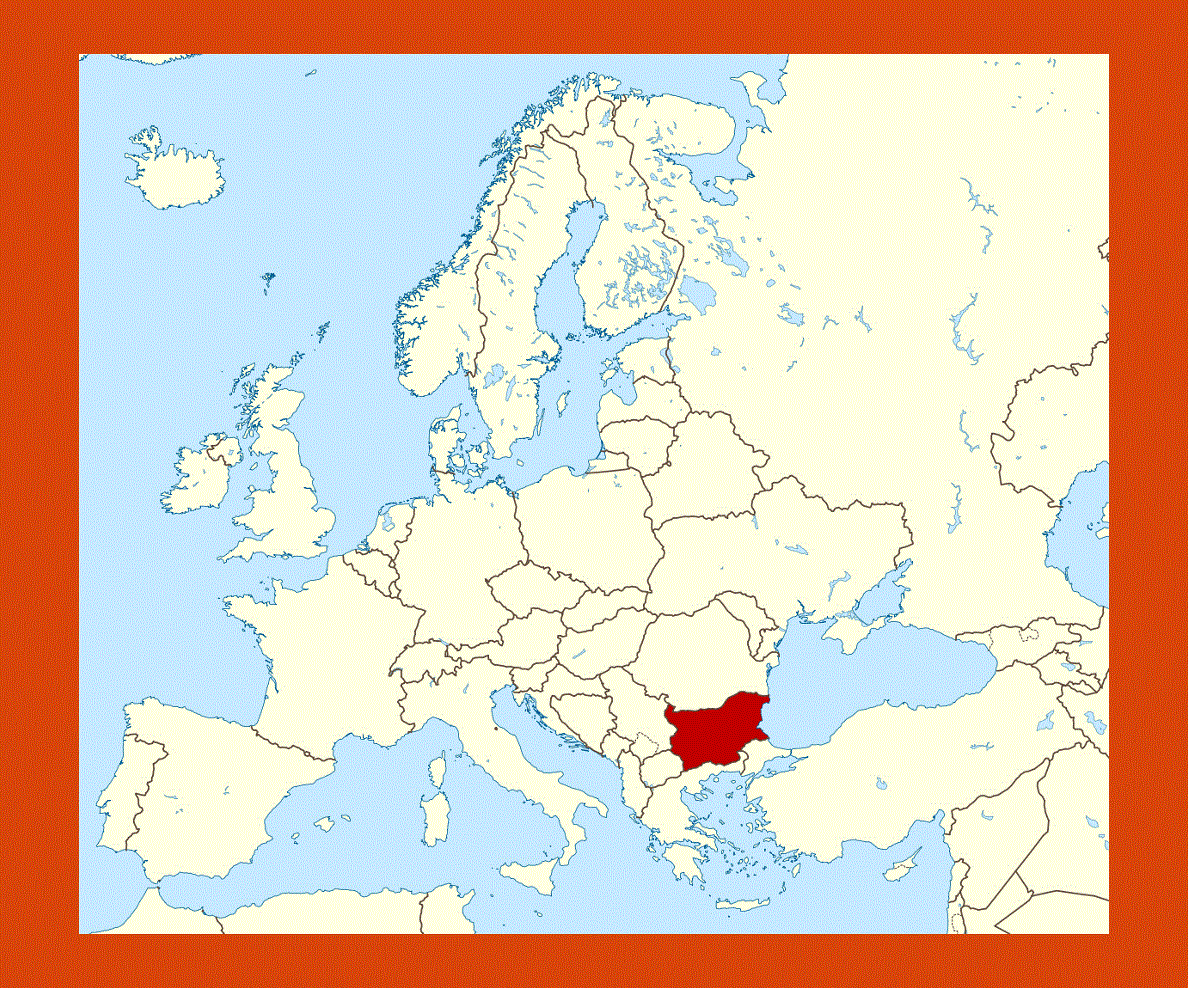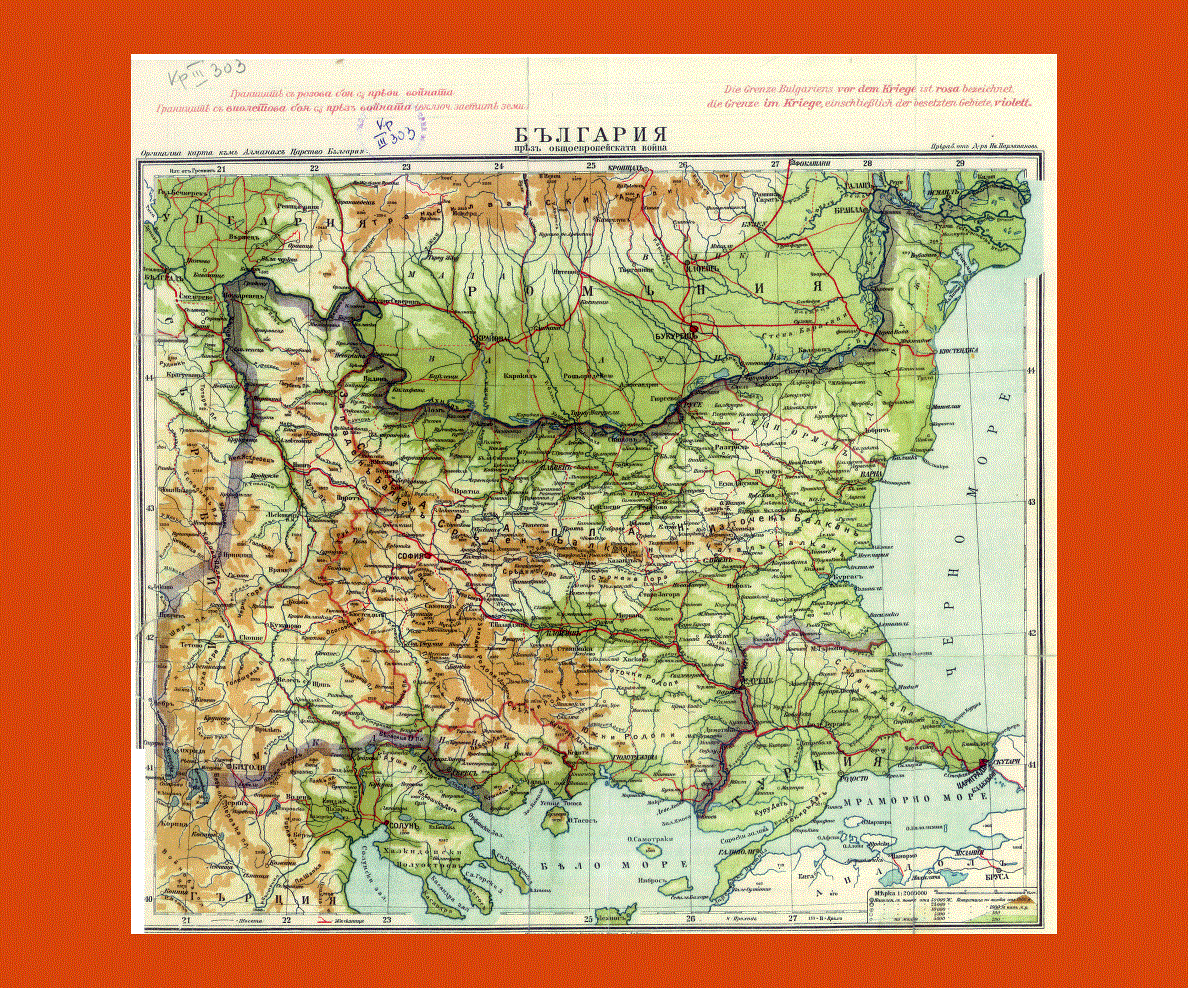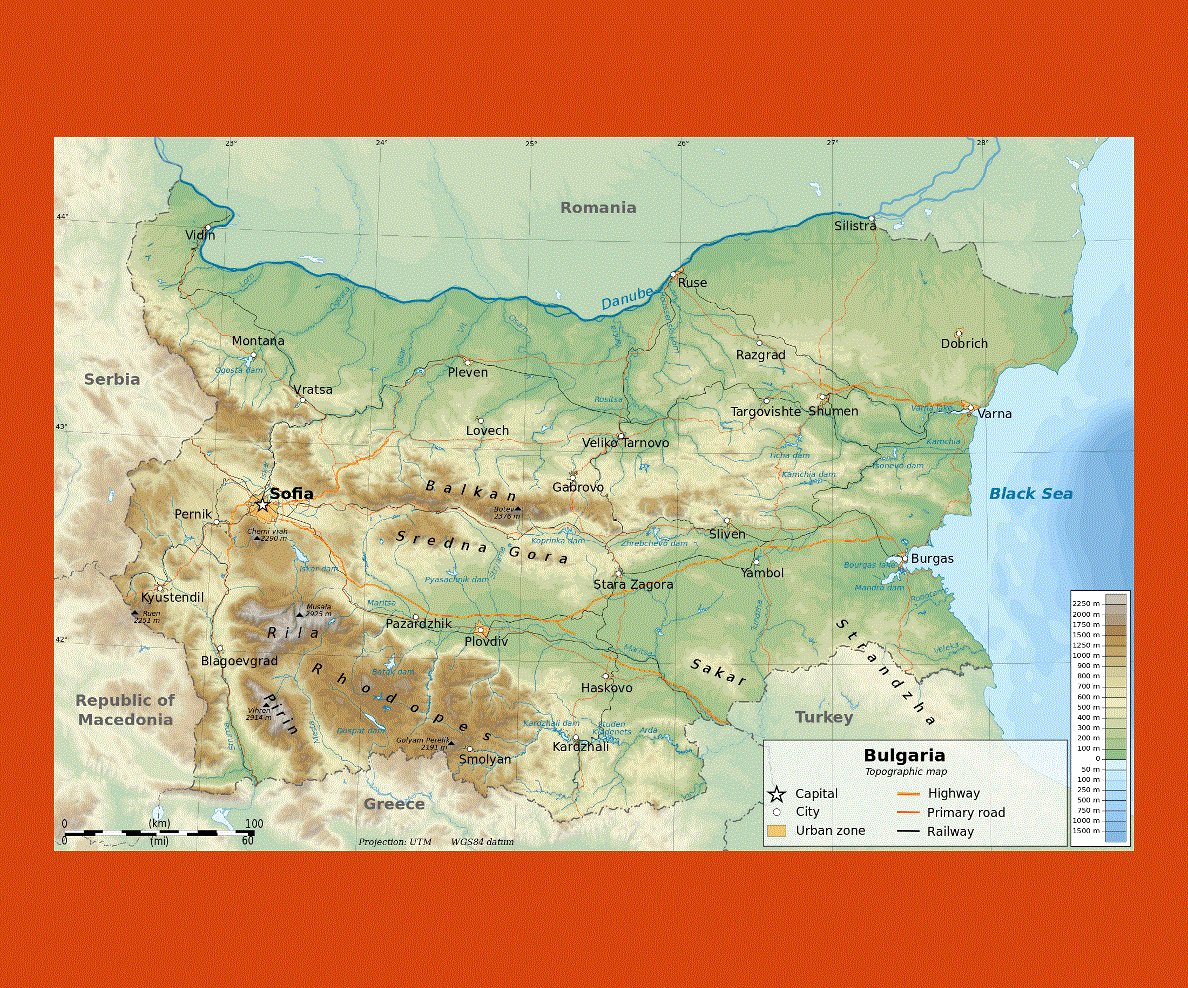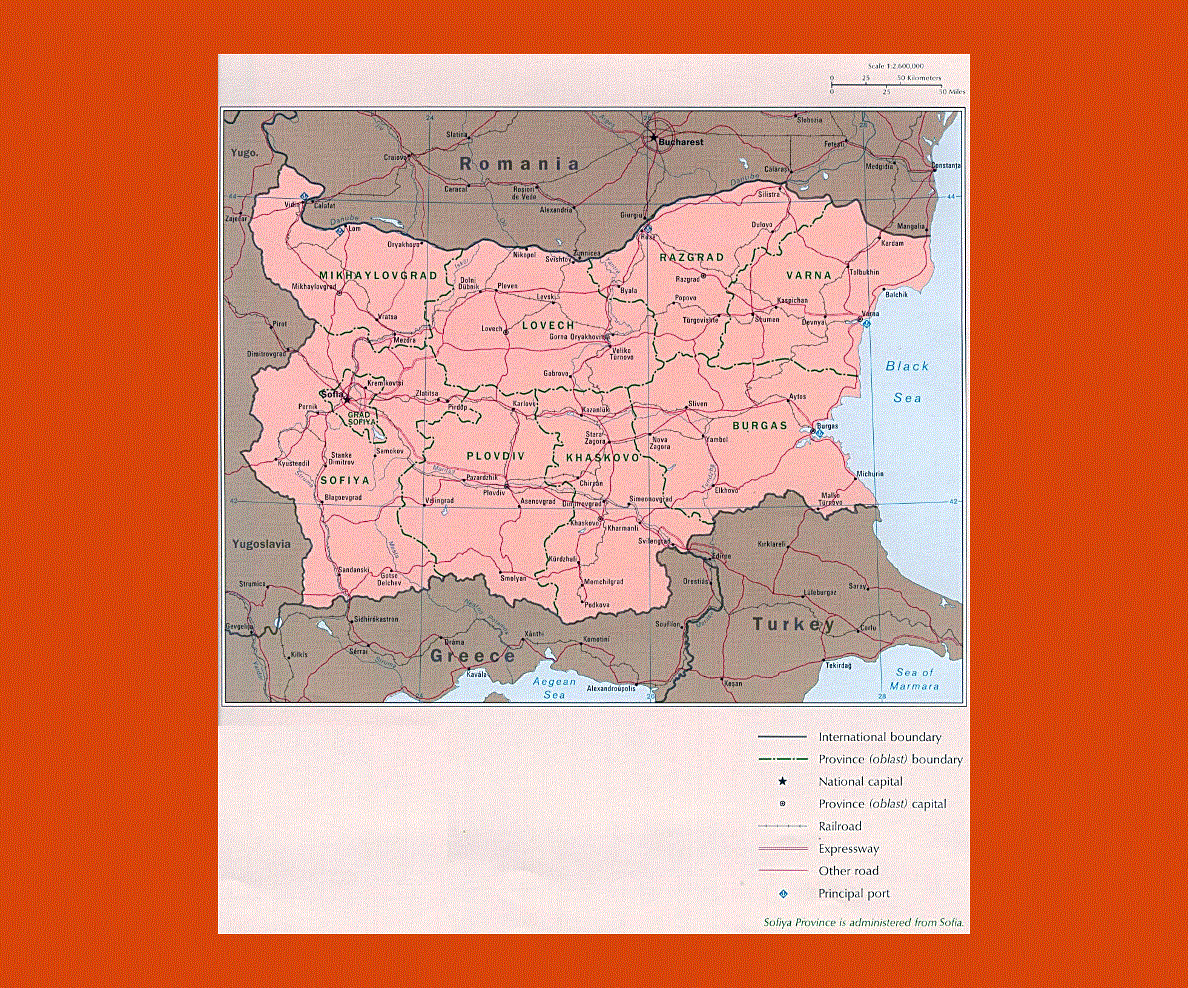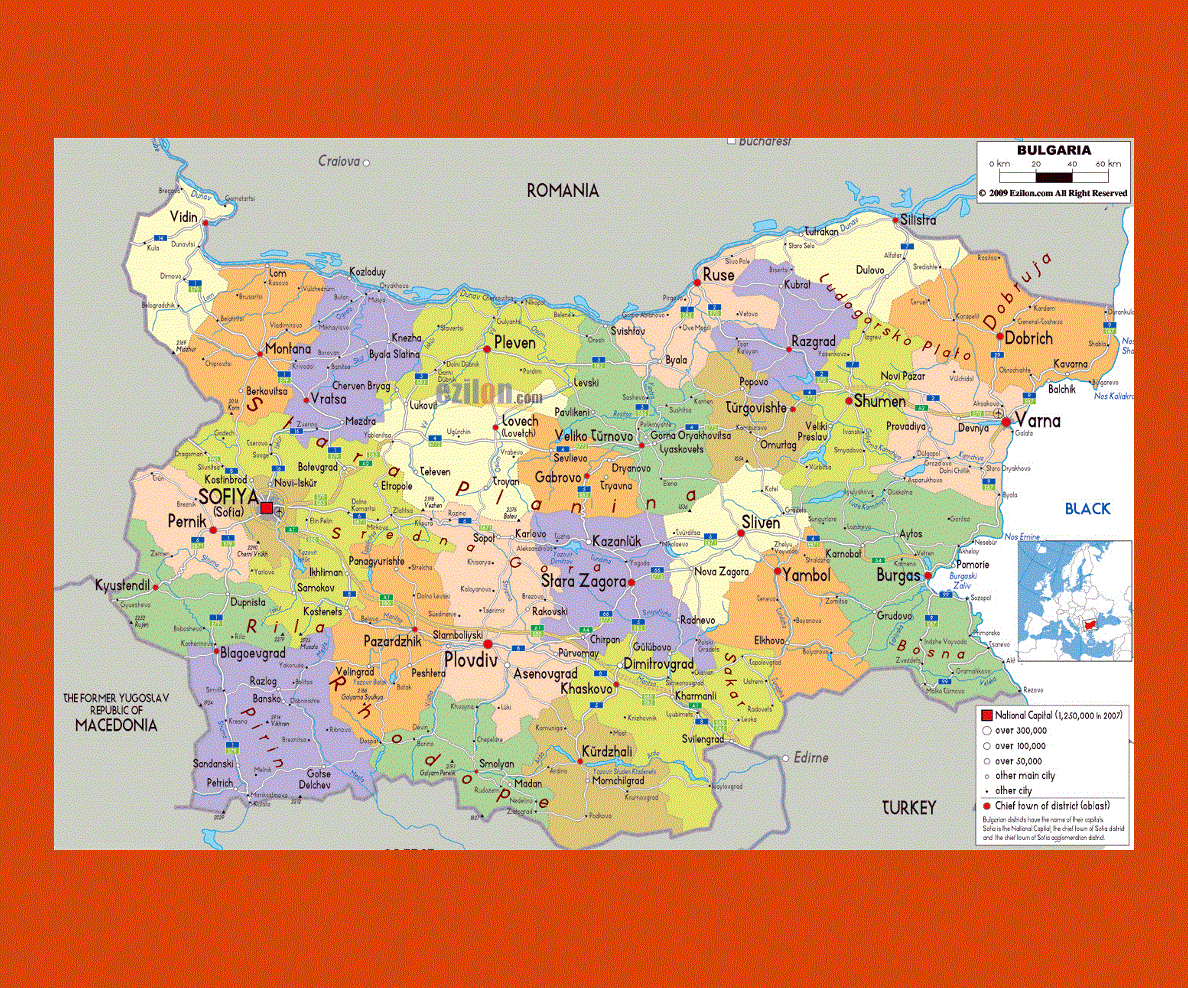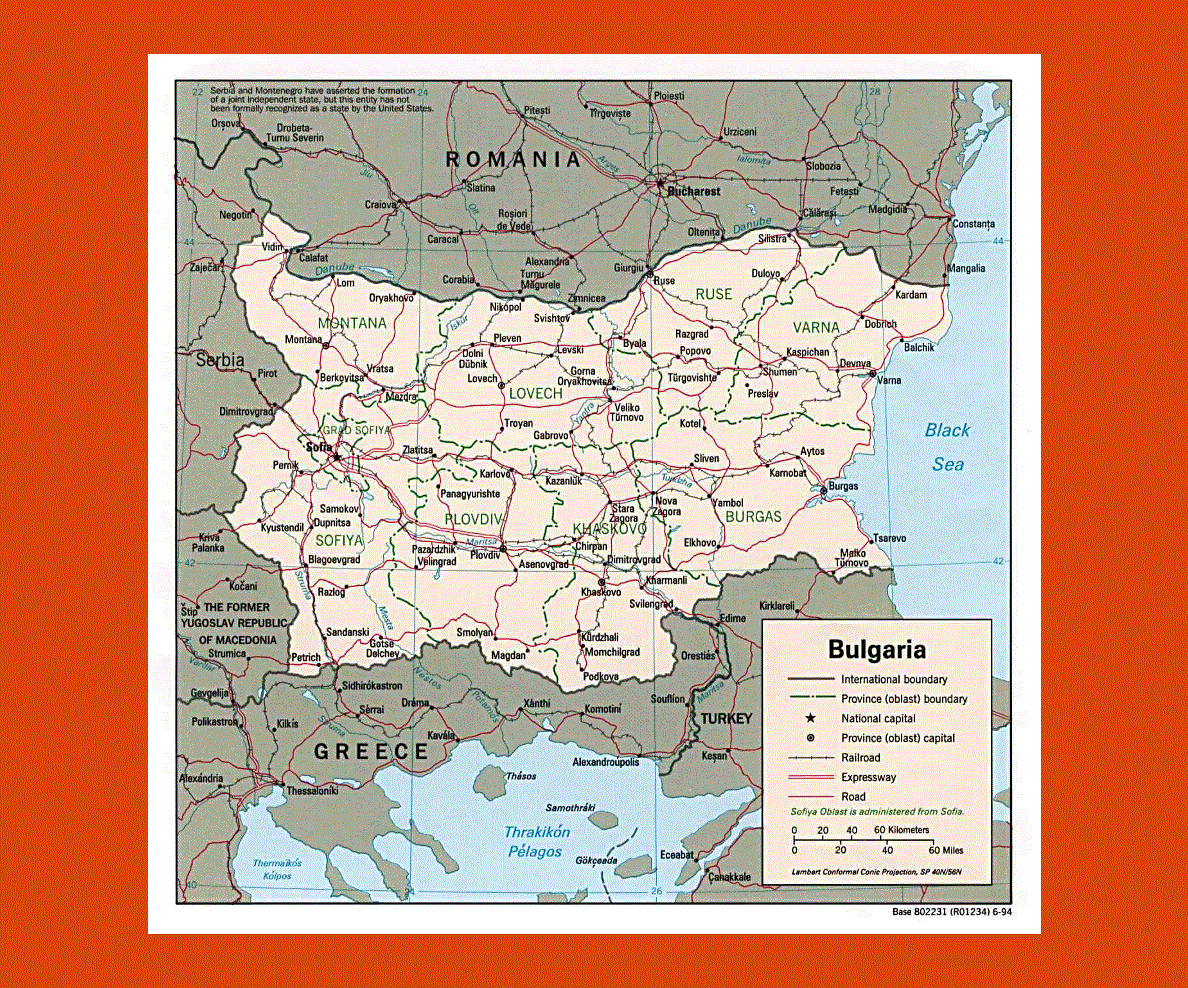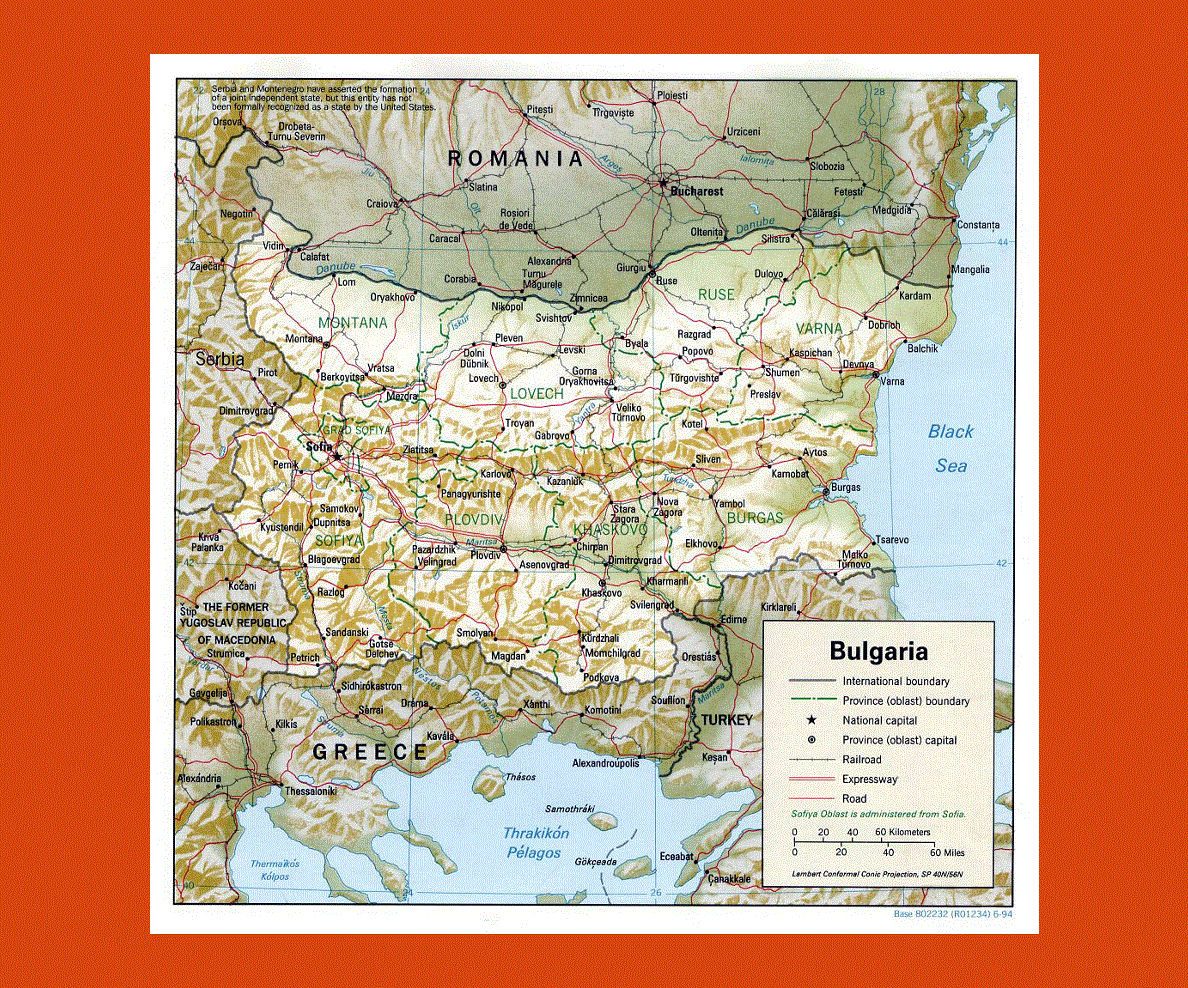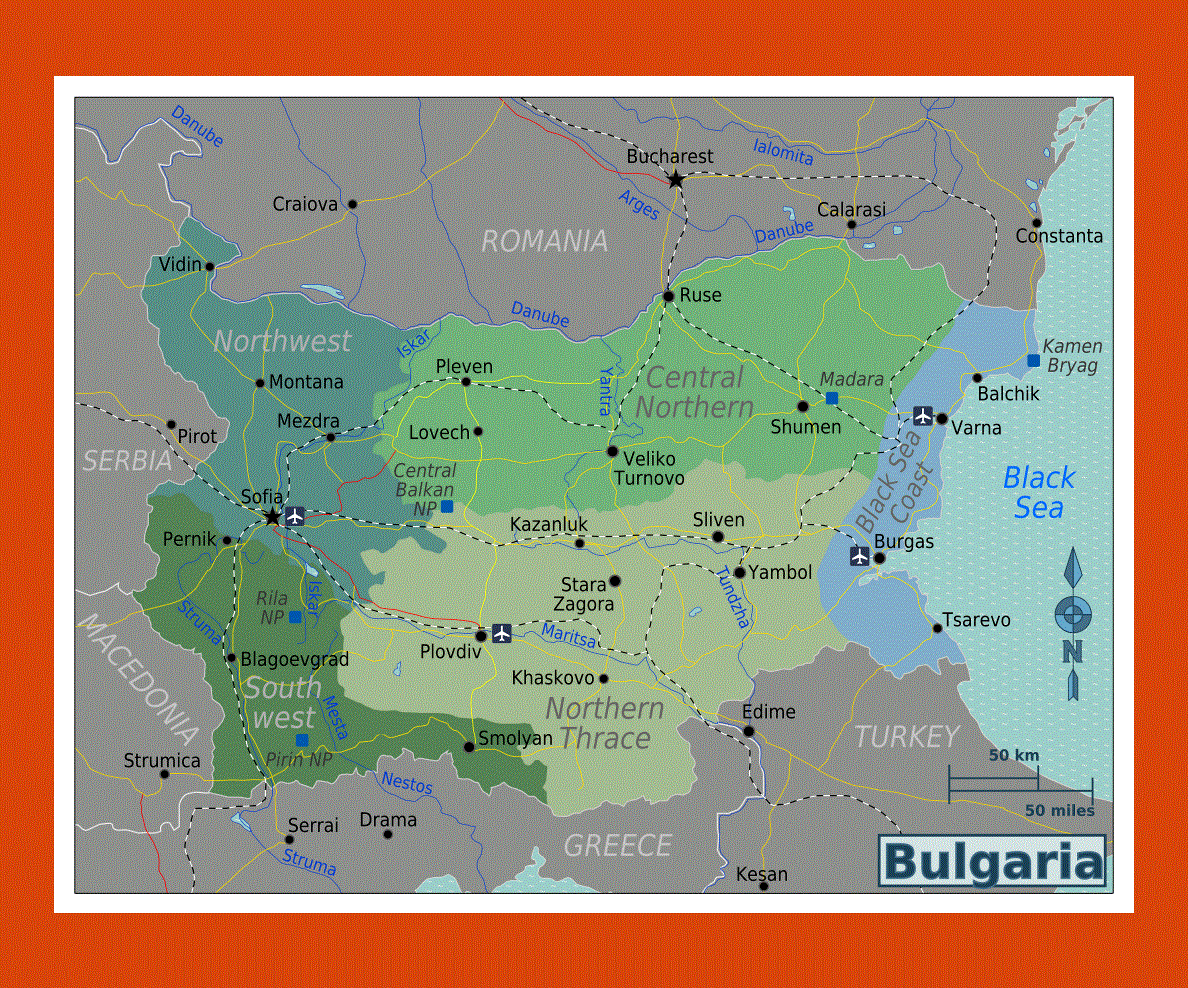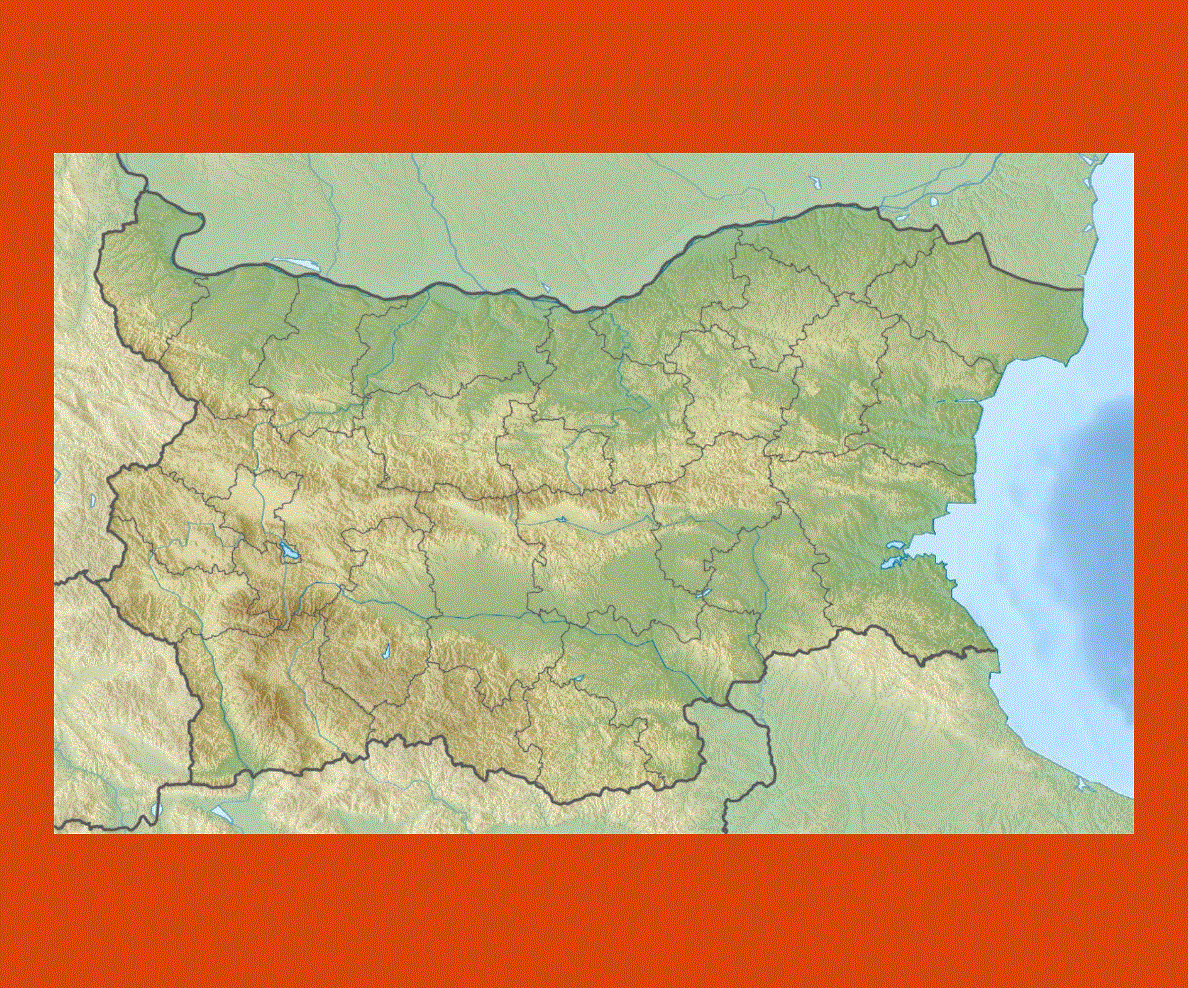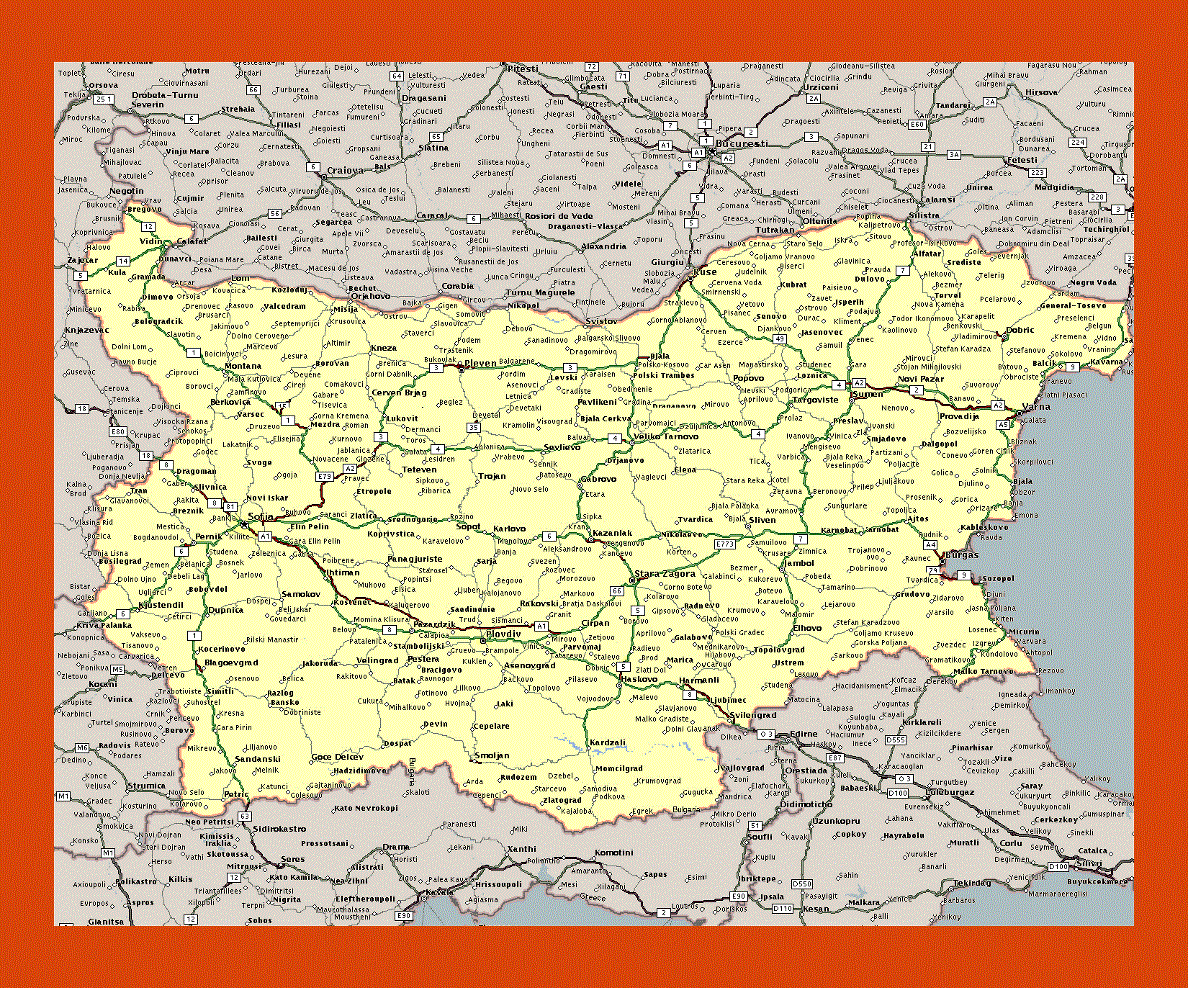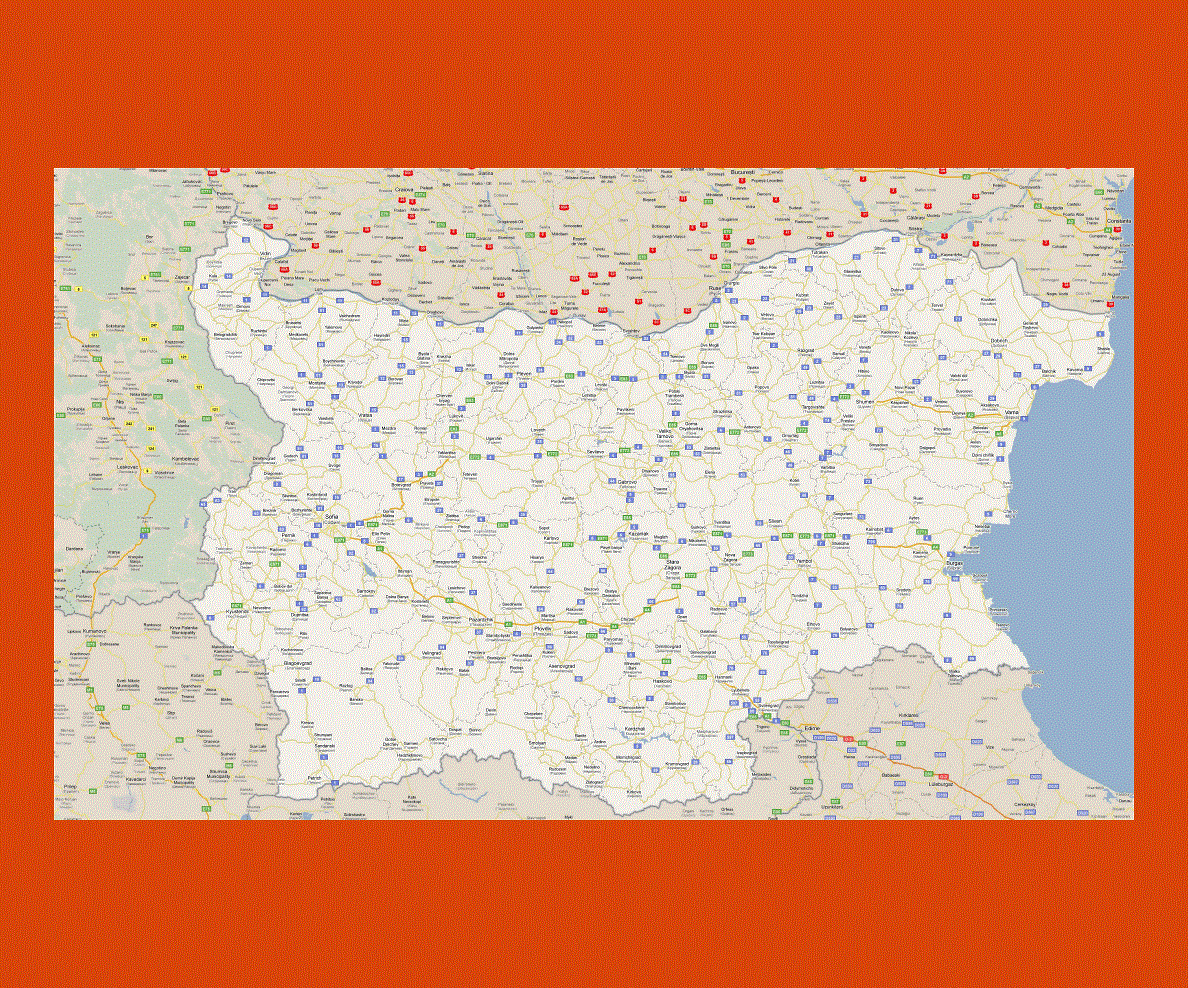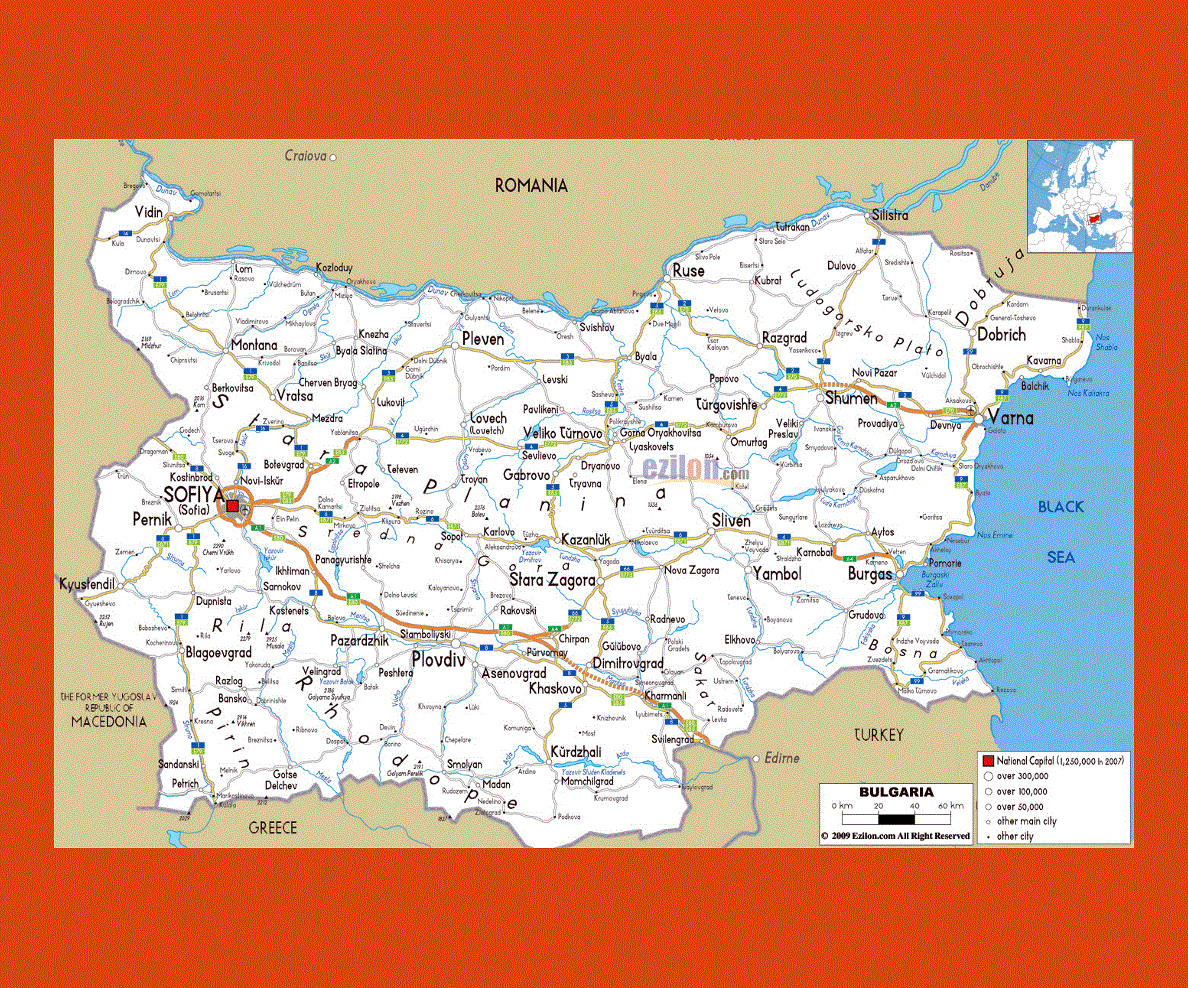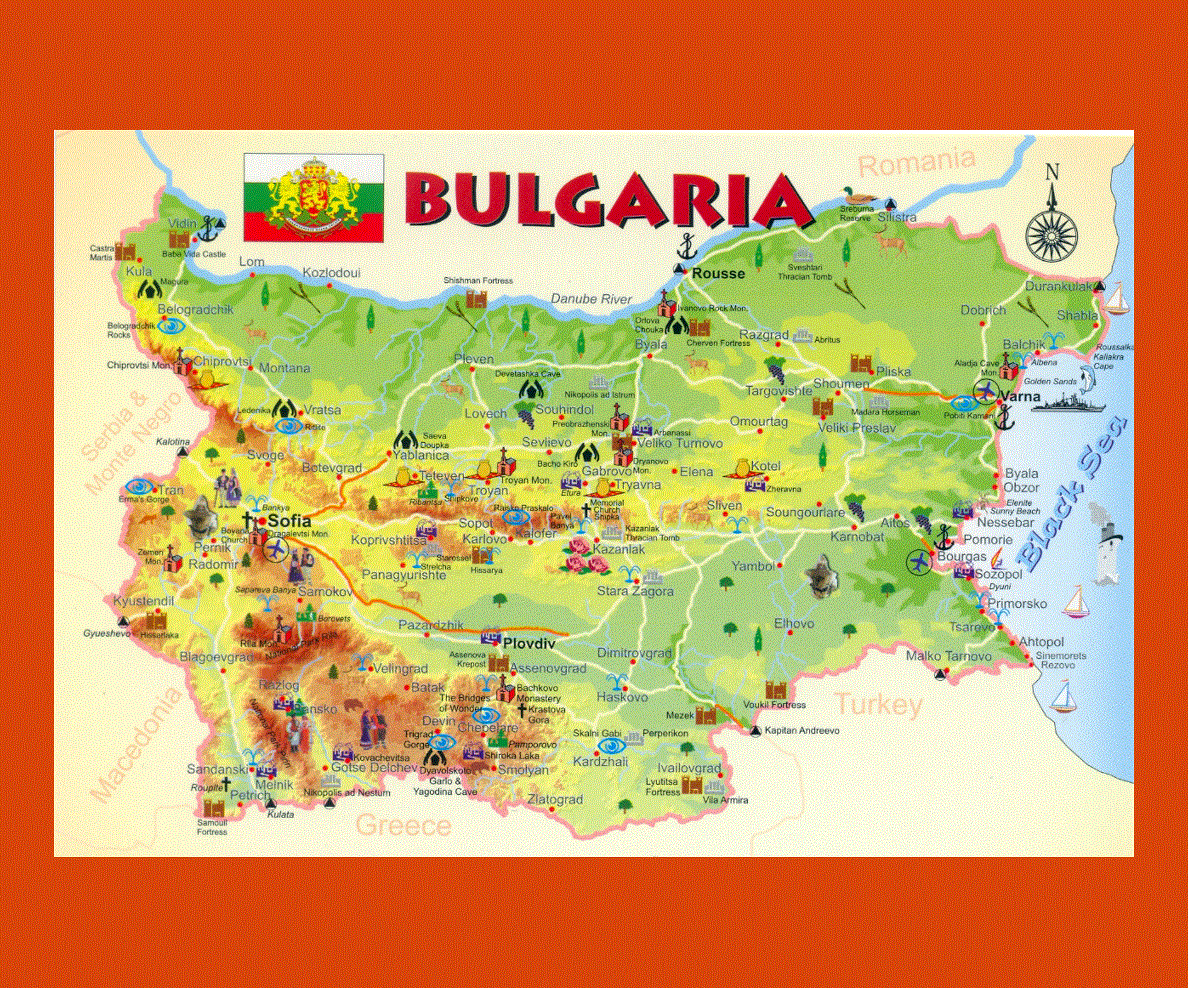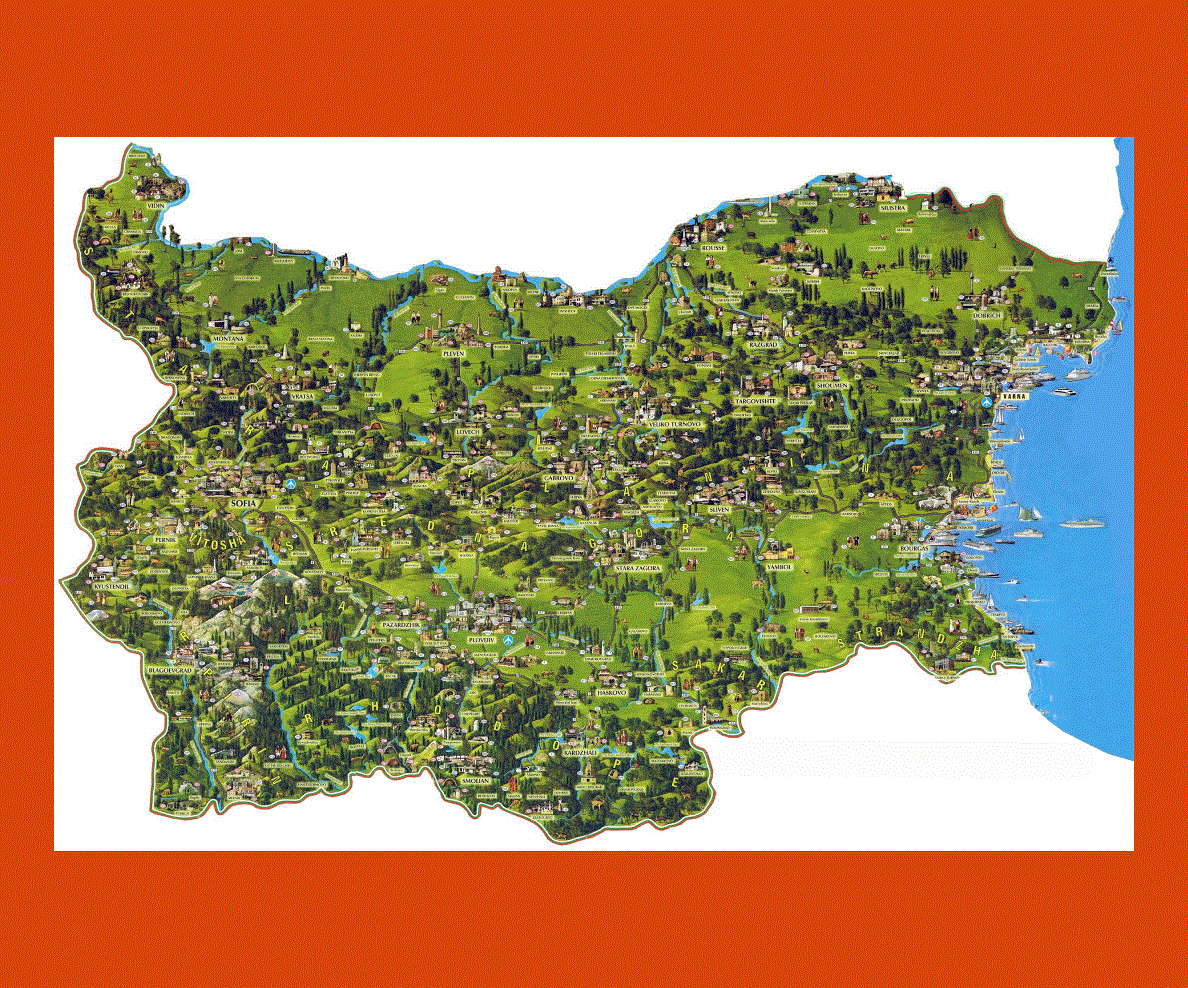Maps of Bulgaria
Situated in South Eastern Europe, Bulgaria is a new member of the EU (2007) its north borders lay just across the River Danube from Romania, while in the south and west lay Turkey, Greece, Serbia and the Former Yugoslav Republic of Macedonia.
The Black sea offers some of the largest golden beaches in Europe, while the Balkan Mountains are the place to be during the winter season, where snow is always plentiful at the ski resorts.
Bulgarian is the official language, although Turkish and Macedonian are also spoken and in Sophia, the capital as well as in other tourist sites where English, German, French and Russian are also spoken. The capital and other bigger cities have undergone a deep transformation since the end of the communist reign and have now become magnificent and vibrant cities with beautiful boulevards bordered by cafes and shops.
A lot of the tourism revolves around the beaches on the Black Sea or the mountains, which take up half of the country’s surface area, although there are many well preserved and authentic villages far from the cities, which offer true Bulgarian folklore and typical warm hospitality.
The country offers fine examples of different architectural styles including, Byzantine, Turkish, Greek and Roman churches and buildings. There are also museums of archeology or art collections and many monasteries scattered around the country. Plovdiv is Bulgaria’s second largest city and has preserved it’s past beauty, with narrow cobblestone streets, picturesque houses and the magnificent Roman Amphitheatre.
The climate varies according to the altitude. Summer is very warm, with breezes from the sea, while in the winter there is plenty of snowfall.

